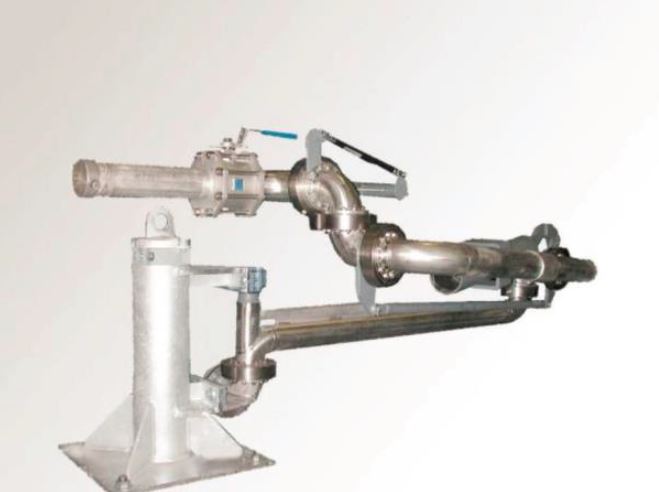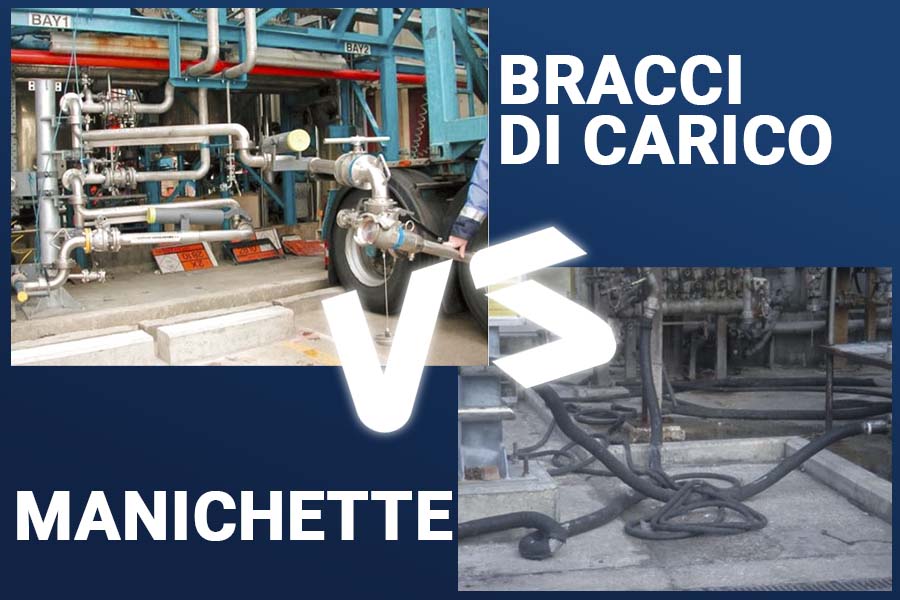Operation & process Loading & Unloading Arms They require only one operator to use Equipped with process valves and couplers Equipped with purge and drainage valves Equipped with heating and insulation system Equipped with process sensors and control panel with load interlock management Side and rear connection to tanks
Operation & process Hoses May require multiple operators to use
Difficult to equip with process valves due to the unsupported weight
Difficult to fit with purge and drain valves due to the weight involved
They may have product stagnation in the curves
Difficult to equip with heating systems and process sensors
Operator safety Loading & Unloading Arms Jointed for easy handling
Self-supported by the balancer – no effort on the part of the operator
Parking safely and neatly to avoid tripping
They allow to have safe maneuvering points, not contaminated by the transferred product
Operator safety Hoses Heavy to handle
Placed on the ground, which obstruct the passage with the risk of tripping
They may have product spills during use with consequent risk of contact with the operator
Risk of major accidents (Seveso) Loading & Unloading Arms Equipped with various types of emergency release valves in case of accidental starting of the tanker
Equipped with double safety sealing systems
Equipped with leak detection system
Equipped with process sensors and control panel with safety interlock management
From specialized literature, the arms have a leak rate ten times lower than that of the hoses
From specialized literature, the booms have a serious failure rate ten times lower than that of hoses
Possible achievement of failure conditions configurable as not reasonably conceivable (𝟏𝟎−𝟖 𝟏𝟎−𝟗) with consequent reduction in insurance costs
Risk of major accidents (Seveso) Hoses Equipped only with cable emergency release valve
They may have serious breakages (therefore with large fluid spills) due to the accidental departure of the tanker
They can have serious losses or breakages because they are placed on the ground, tangled, crushed by the tanker, etc.
Maintenance Loading & Unloading Arms Swivel joints with permanent lubrication
Four-piece swivel joints for easy maintenance
Preventive maintenance (seals replacement) approximately every 15,000 cycles (depending on the application)
Warranty extendable to five years
Dedicated preventive / extraordinary maintenance contracts
Maintenance Hoses Annual pressure test
Ordinary maintenance
Life Cycle Cost Loading & Unloading Arms Indicatively (depending on the application) 25 years of guaranteed useful life
Possibility of not supervising the loading point using the leak detection and automatic loading systems with the consequent possibility of reallocating human resources
Life Cycle Cost Hoses Indicatively (depending on the application) 5 years of useful life








